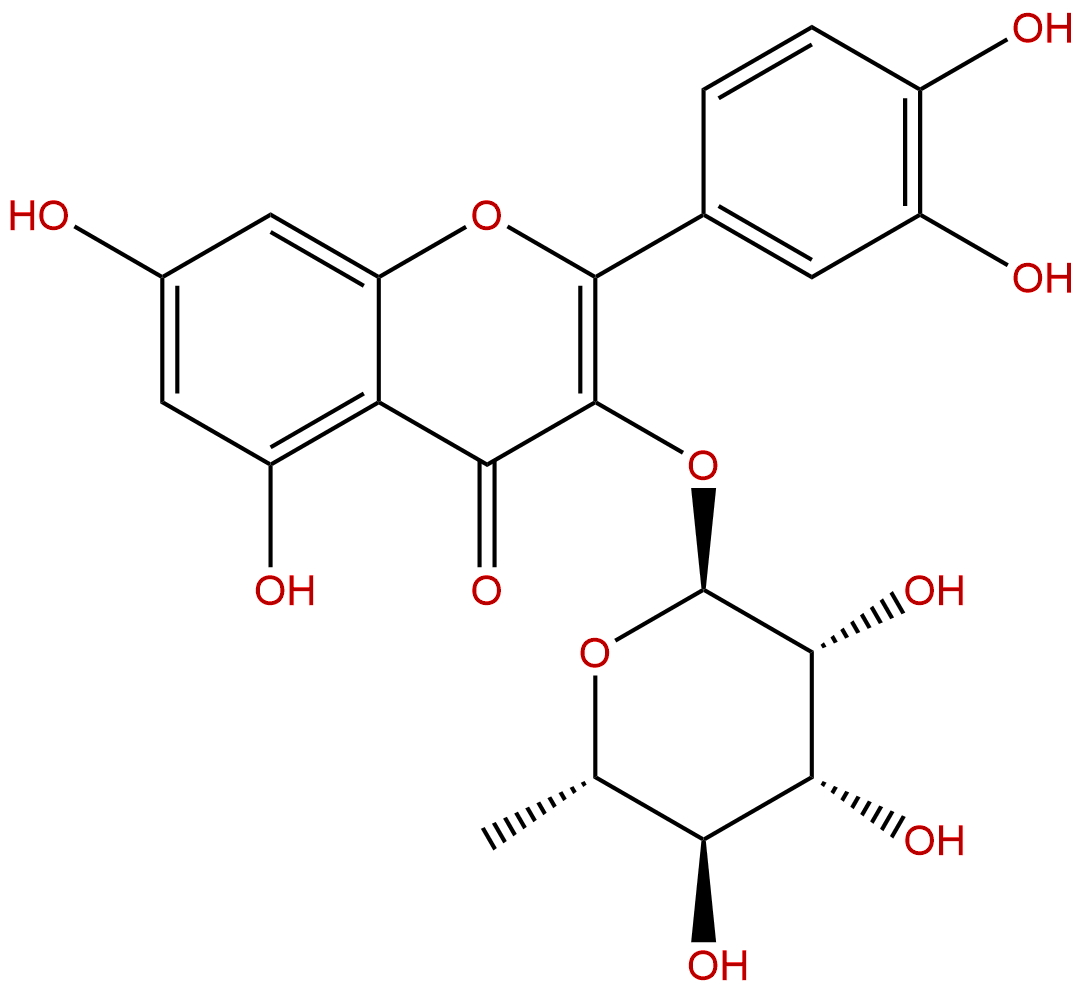Product name: Quercitrin
Synonym name: Quercitroside; Quercitronic acid; Thujin
Catalogue No.: BP1192
Cas No.: 522-12-3
Formula: C21H20O11
Mol Weight: 448.38
Botanical Source: Occurs widely in plants
Physical Description: Yellow powder
Type of Compound: Flavonoids
Purity: 95%~99%
Analysis Method: HPLC-DAD or/and HPLC-ELSD
Identification Method: Mass, NMR
Packing: Brown vial or HDPE plastic bottle
Storage: Store in a well closed container, protected from air and light. Put into refrigerate or freeze for long term storage.
Whenever possible, you should prepare and use solutions on the same day. However, if you need to make up stock solutions in advance, we recommend that you store the solution as aliquots in tightly sealed vials at -20℃. Generally, these will be useable for up to two weeks.
The product could be supplied from milligrams to grams, up to kilograms
Inquire for bulk scale.
Descriptions:
Quercetin is a common antioxidant flavonoid found in vegetables, which is usually present in glycosylated forms, such as quercitrin (3-rhamnosylquercetin), has anti-inflammatory effect which is mediated through the inhibition of the NF-kappaB pathway, inhibits cytokine and inducible nitric oxide synthase expression through inhibition of the NF-kappaB pathway without modification of c-Jun N-terminal kinase activity (both in vitro and in vivo). [1]
Quercetin has prevention of H2O2-induced apoptosis via anti-oxidant activity and heme oxygenase 1 gene expression in macrophages. [2]
Quercitrin exhibits a scavenger and antioxidant role, and these effects probably are mediated via different mechanisms, which may involve the negative modulation of the Fenton reaction and NMDA receptor. [3]
Quercetin( 50 μM)can reduce UVB-induced cell death and apoptosis in HaCaT cells, also similarly reduce UVB-induced ROS generation and cell death in live zebrafish. [4]
Quercitrin exhibits strong antioxidant and anti-carcinogenic activities, it contributes to the inhibition of neoplastic transformation by blocking activation of the MAPK pathway and stimulation of cellular protection signaling. [5]
Quercitrin and Taxifolin can stimulate osteoblast differentiation in MC3T3-E1 cells and inhibit osteoclastogenesis in RAW 264.7 cells, shows a positive effect of these flavonoids on bone metabolism. [6]
References:
[1] Comalada M, Camuesco D, Sierra S, et al. Eur J Immun, 2005, 35(2):584–92.
[2] Chow J M, Shen S C, Huan S K, et al. Biochem Pharmacol, 2005, 69(12):1839-51.
[3] Wagner C, Fachinetto R, Corte C L D, et al. Brain Res, 2006, 1107(1):192-8.
[4] Yang H M, Ham Y M, Yoon W J, et al. J Photoch Photobio B , 2012, 114(5):126-31.
[5] Ding M, Zhao J, Bowman L, et al. Int J Oncol, 2010, 36(1):59-67.
[6] Satué M, Arriero M D M, Monjo M, et al. Biochemical Pharmacology, 2013, 86(10):1476-1486.
[7] Li J, Wang Z W, Zhang L, et al. Biomedical Chromatography, 2008, 22(4):374-8.


